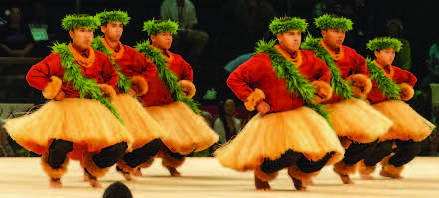
Aug 1, 2012 | Environment
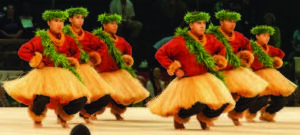 Husband and wife ‘Iliahi and Haunani Paredes said they demand hard work, dedication and sacrifice as kumu hula of the award-winning Hālau Kekuaokalā‘au‘ala‘iliahi. The couple formed the hālau in October 2004 with the mission to preserve and perpetuate the “beautiful art form of hula.” Haunani Paredes adds: “The hula touches all aspects of the Hawai‘i culture, and through the hula, we promote other facets of our complex culture like the language, chant, history and crafts.” The hālau has 200 members who range in age from three to 70 and older.
Husband and wife ‘Iliahi and Haunani Paredes said they demand hard work, dedication and sacrifice as kumu hula of the award-winning Hālau Kekuaokalā‘au‘ala‘iliahi. The couple formed the hālau in October 2004 with the mission to preserve and perpetuate the “beautiful art form of hula.” Haunani Paredes adds: “The hula touches all aspects of the Hawai‘i culture, and through the hula, we promote other facets of our complex culture like the language, chant, history and crafts.” The hālau has 200 members who range in age from three to 70 and older.
In its seven years, the hālau has performed on Maui, on O‘ahu, on the East Coast and at international venues. Dancers have competed and won numerous awards at prestigious events including its first hula competition in 2005 at the Ka‘anapali Beach Hotel’s Hula O Nā Keiki Competition on Maui and the Merrie Monarch Festival on the Big Island. ‘Iliahi Paredes said he and his wife stress that “the greatest victory is for us to see our students blossom before our eyes. To know that hula has made our students better people in the community makes the hard work and sacrifice worth it.” Besides competitions and festivals, the hālau has entertained at local nonprofit fundraisers, the Maui Ag Festival and the Hawaiian Civic Club’s Holokū Ball.
The Paredes say hula touches people’s soul and hālau participation is not limited to race, age or gender. The couple also readily admits that it isn’t easy to be a member of their hālau. “Only the strong survive,” ‘Iliahi said, adding that hula takes a back seat to a performer’s education. Students failing in school are not allowed to participate in hula classes or events. “Our hope is that hula can coexist harmoniously with family, work, and school,” Haunani said. “We tell parents that we support positive educational decisions for their children, and if we can assist in any way, we will help,” ‘Iliahi adds.
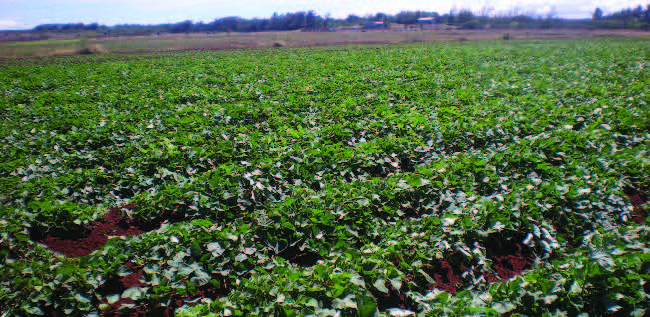
Jul 25, 2012 | Environment

It takes hard work, determination and perseverance to make L&R Farms the successful business it is today on Moloka‘i, according to founder Lynn Decoite. She and her husband, Russell, established the farm in 2001 along with their children, producing three varieties of sweet potato — Moloka‘i Purple, Moloka‘i Gold and the more universally common orange. While the purple potato variety has been a traditional part of Hawaiian luaus, it is now being served at commercial luaus on the other islands and on island style plates at many restaurants in Hawaii. The Decoites’ dream is to one day export their product throughout the United States.
For now, L&R Farms stocks up restaurants and other establishments with the Moloka‘i sweet potato that was initially developed by Lynn’s grandmother, Becky Mokuau. She started raising tubers in the early 1960s on the family homestead and passed the “secrets” to her son, George Mokuau. George’s daughter, Lynn Decoite now gets help from her husband and their children with growing the sweet potatoes in Ho’olehua in rural Moloka‘i. “We have seven employees and we all strive to make our product the best we can,” Lynn Decoite said.
Ten years ago, L&R Farms introduced their renowned Moloka‘i Sweet Potato Chips as a snack for residents and visitors to enjoy and share with family and friends. The farms’ website states that the product is prepared like regular potato chips but with select sweet potatoes grown on Moloka‘i. They describe it as having a “crisp taste of Moloka‘i found nowhere else.” Every day, Decoite said, the farm tries to keep up a tradition of satisfying customers. “We believe that people enjoy our product and we are happy to supply them with it.” She said running a farm has its challenges. “We see ourselves as a small contributor to the economy, but know that the daily struggles to keep a farming operation in business are tough in this economy.”
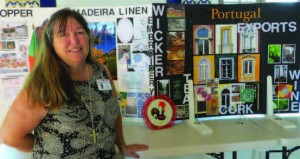
Jul 18, 2012 | Community, Environment
 As a young girl growing up on Maui, Laura Souza Paresa remembers her grandma reciting the rosary in Portuguese. “I asked her to teach me but she said, ‘You’re American, you speak English.’” Now as an adult, Paresa and 14 other active members of the Maui Portuguese Cultural Club learn everything they can about their language, their culture, and the history of Portugal. “The more I researched the history, the more I was amazed,” said Paresa, a four-year Portuguese Club president. “I feel honored to be a descendant of these people.”
As a young girl growing up on Maui, Laura Souza Paresa remembers her grandma reciting the rosary in Portuguese. “I asked her to teach me but she said, ‘You’re American, you speak English.’” Now as an adult, Paresa and 14 other active members of the Maui Portuguese Cultural Club learn everything they can about their language, their culture, and the history of Portugal. “The more I researched the history, the more I was amazed,” said Paresa, a four-year Portuguese Club president. “I feel honored to be a descendant of these people.”
The Maui Portuguese Cultural Club spent this year baking loaves of white bread and cinnamon bread and making pots of Portuguese bean soup as part of two separate fundraisers that garnered some $7,000. Club members invested the money in sprucing up the Portuguese model home and surroundings at Kepaniwai Park, where Maui’s multi-cultural history is showcased. In the Portuguese model home, a colorful exhibit traces the country’s history and outlines pictures of Portuguese exports such as copper, crystal and linen, and practices such as festivals honoring Catholic saints. “Most of our traditions are centered on the church,” Paresa said.
Paresa said about 10 percent of Hawaii’s population has Portuguese ancestry, yet not many are exposed to the rich history of the culture. She said the club awards college scholarships and it does what it can to educate others about the culture and history of the people. Portuguese Cultural Club members have trekked to Portugal and enjoyed hearing stories about a Portuguese family’s daily life. “They were hardworking individuals,” Paresa said. “In these stories, we’ve found they had a very rich culture and they also had a lot of faith.” The Maui Portuguese Cultural Club plans to be more visible at events in the community and accepts new members any time. “You don’t even have to be Portuguese to join the club. If you’re interested in the Portuguese culture, we welcome you,” Paresa said.

Jul 11, 2012 | Community
 Maui High School graduate Marie Alexie Sijalbo visited Hana for the first time this summer. Sijalbo said she liked what she saw as she traveled for the first time to the remote part of East Maui as a member of the Youth Alliance. “I have never gone camping before and this experience has made me see what I have been missing out on,” she said. Accompanied by Maui Economic Development Board staff, Sijalbo joined other high schoolers and rode a bus to Hana as part of the Youth Alliance’s “capstone” event for school year 2011-2012. The trip’s highlights featured kumu Francis Sinenci and his presentation on hale building, swimming at beaches and hiking trails in Hana.
Maui High School graduate Marie Alexie Sijalbo visited Hana for the first time this summer. Sijalbo said she liked what she saw as she traveled for the first time to the remote part of East Maui as a member of the Youth Alliance. “I have never gone camping before and this experience has made me see what I have been missing out on,” she said. Accompanied by Maui Economic Development Board staff, Sijalbo joined other high schoolers and rode a bus to Hana as part of the Youth Alliance’s “capstone” event for school year 2011-2012. The trip’s highlights featured kumu Francis Sinenci and his presentation on hale building, swimming at beaches and hiking trails in Hana.
Adam Skelton, a soon-to-be-senior at Kumu Wai Mauloa Academy, said he found a new respect for the Hawaiian culture. “Learning the old ways and how we can apply them to our ways now is a valuable lesson,” he said. Sinenci shared his knowledge of hale building and the use of natural materials including leaves and wood. “When I learned all of these things I realized that hale building is more complicated than I thought,” Maui High 2012 graduate Cyndi Segundo said. “However it is something that the Hawaiians did in the past and it is important for us to preserve it.” Skelton agreed. “It is important for us to pass along this knowledge that we have learned and keep the culture and history alive for future generations.”
The opportunity to swim in pristine water, hike in lush surroundings and bond with other Youth Alliance members made the Hana visit even more enjoyable. A Youth Alliance member of three years, Skelton encouraged others to join. “Not only for the knowledge that you will gain, but the friends that you will make,” he said. Youth Alliance members in grades 9 through 12 gather during the school year to explore facets of the Maui community. The behind-the-scenes look is accompanied by projects and activities that give participants opportunities to see how the Maui community works. For more information about the free program, contact Willow Krause at 875-2432 or e-mail willow@medb.org
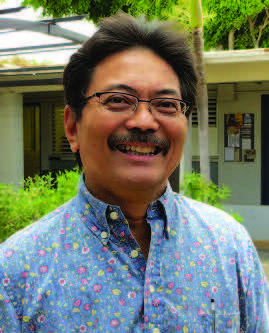
Jul 4, 2012 | Community
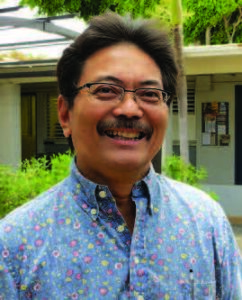 Principal Randy Yamanuha retired in June after 30 years of service with the State Department of Education. At age 56, he leaves his post to serve as caregiver for his aging parents, Yoshio and Sadae Yamanuha. “I’ve always told my staff, family comes first and so I need to practice that same philosophy,” he said. “It’s with a heavy heart. I’ve enjoyed working and I love the staff and the school.”
Principal Randy Yamanuha retired in June after 30 years of service with the State Department of Education. At age 56, he leaves his post to serve as caregiver for his aging parents, Yoshio and Sadae Yamanuha. “I’ve always told my staff, family comes first and so I need to practice that same philosophy,” he said. “It’s with a heavy heart. I’ve enjoyed working and I love the staff and the school.”
Amongst the things Yamanuha is most proud of in his 10- year term as principal is his school’s care and attention to Science, Technology, Engineering and Math or STEM education. He said Maui High has built a rigorous curriculum that includes emphasis on science and math with the intention of preparing students for high-tech, high-paying jobs. “In education, we can’t really keep up with all the technology. We need the community to help us out,” he said. That’s where organizations like Maui Economic Development Board provide technical assistance to teachers yearning to learn more about STEM curriculum, and support for students successfully competing in national competitions for robotics, science and digital media. “It brings relevance to why they’re taking the math, why they’re taking the science. Programs, like the ones MEDB supports, lets them see the connection,” Yamanuha said. He’s especially pleased to see how technology-based projects have taught students life lessons in the importance of team work.
As principal of Maui High, Yamanuha has taken charge of a large campus — 1,850 students in grades 9 to 12 — and a staff of 120. “Our philosophy has been to create opportunity for all students,” he said, explaining why as many as a dozen Advanced Placement courses are offered to all students and do not require a teacher recommendation. “We challenge our students and if they’re willing to do the work, we’re going to hold them to that commitment.”
MEDB is holding its annual Ke Alahele Education Fund event on August 18 in part to continue its support of STEM education at Maui High and other schools across the county. For more information, go to www.medb.org.

 Husband and wife ‘Iliahi and Haunani Paredes said they demand hard work, dedication and sacrifice as kumu hula of the award-winning Hālau Kekuaokalā‘au‘ala‘iliahi. The couple formed the hālau in October 2004 with the mission to preserve and perpetuate the “beautiful art form of hula.” Haunani Paredes adds: “The hula touches all aspects of the Hawai‘i culture, and through the hula, we promote other facets of our complex culture like the language, chant, history and crafts.” The hālau has 200 members who range in age from three to 70 and older.
Husband and wife ‘Iliahi and Haunani Paredes said they demand hard work, dedication and sacrifice as kumu hula of the award-winning Hālau Kekuaokalā‘au‘ala‘iliahi. The couple formed the hālau in October 2004 with the mission to preserve and perpetuate the “beautiful art form of hula.” Haunani Paredes adds: “The hula touches all aspects of the Hawai‘i culture, and through the hula, we promote other facets of our complex culture like the language, chant, history and crafts.” The hālau has 200 members who range in age from three to 70 and older.




